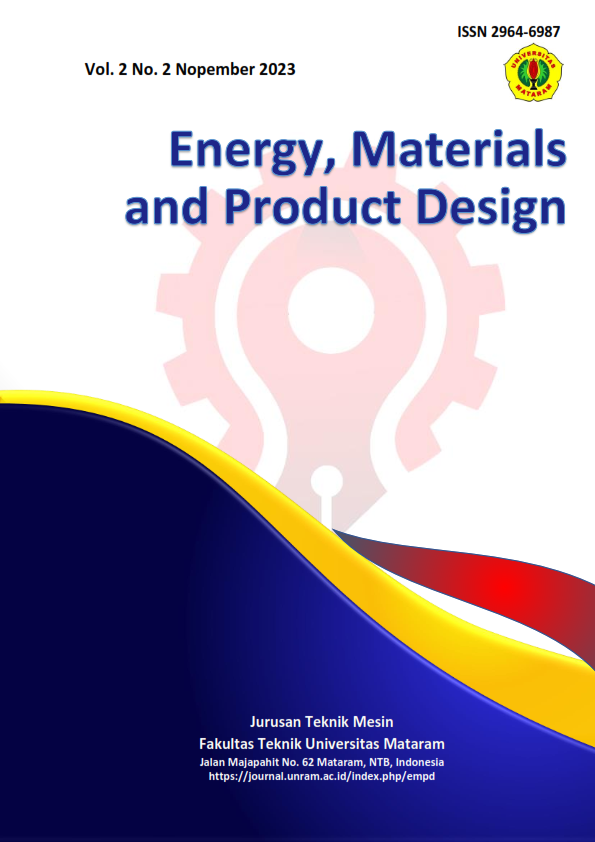SIFAT TEKAN DAN BENDING PANEL SANDWICH BETON RINGAN SELULAR DENGAN PENGUAT PIN BAMBU
Abstract
Bamboo plants are a type of grass with hollow segments in the stems, cylindrical, hard and in each book has buds or branching eyes. This bamboo plant can grow around 1200 meters above sea level and lowlands with humidity conditions and broad soil types. This plant is often found growing wild around river banks, forests, or fields. This plant is used by the community to make matting, bamboo bridges, concrete reinforcement, and so on. Concrete is a mixture consisting of sand, gravel or crushed stone and other aggregates mixed together with a paste made from a mixture of cement and water to from a rock-like mass. Lightweight concrete is concrete with a weight of less than 1900 kg/m3. The value of compressive strength is smaller than ordinary concrete and is not good at conducting heat. The specific gravity of lightweight concrete varies greatly depending on the lightweight aggregate used. Sandwich components are a type of structural composite that has the potential to be developed. Sandwich composite is a composite composed of 3 layers consisting of a flat composite (metal sheet) as the surface skin (skin) and the core material (core) in the middle (the part between). Sandwich composite is a type of composite that is very suitable for resisting bending, impact, vibration and sound dampening. Sandwich composites are made to obtain a lightweight structure but have high stiffness and strength. Usually the selection of sandwich composites materials, the requirements are light weight, heat and corrosion resistance, and price is also considered.
The purpose of this study is to utilize the addition of bamboo as a concrete reinforcement instead of steel, to create a very affordable cost and to find out how much influence the addition of bamboo pins has as a core reinforcement in sandwich composites on the compressive and bending strength of the lightweight concrete. The variation of the spacing of the bamboo pins used is 3 cm and 4 cm for the width, and 4 cm 6 cm for the length of each sandwich composite. The size the sandwich composites varies, while for compression testing it has a length of 15 cm, a width of 15 cm and a thickness of 7,5 cm. And for the bending test it has a length 40 cm, a width of 10 cm, and a thickness of 7,5 cm.
The results showed that there was an increase in strength in the compressive test from those who did not use pins of 0,646 N/mm2, and those who used pins with a distance of 3 cm x 4 cm of 1,94 N/mm2 and a distance of 4 cm x 6 cm of 1,596 N/mm2. Where the longer the distance between the bamboo pins, the strength decreases. For the bending test it also shows an increase from without pins having a value of 0,43 N/mm2 to adding pins with a pin spacing of 3 cm x 4 cm having a value of 0,89 N/mm2 and experiencing a decrease in pin spacing of 4 cm x 6 cm with a value of 0,25 N/mm2.











